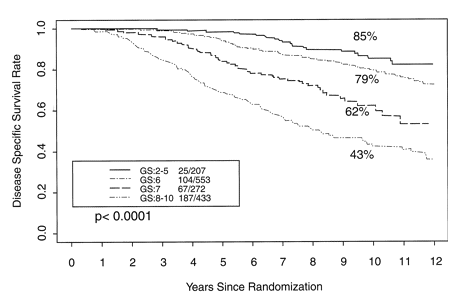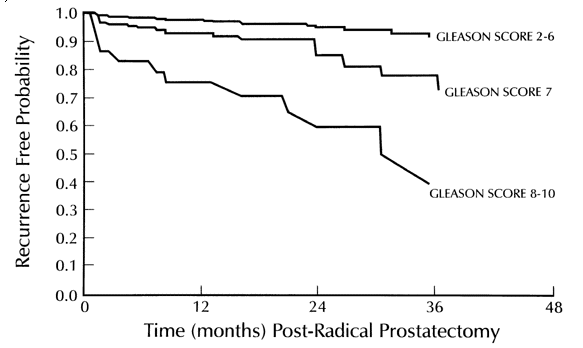|
Histologic Grade of Prostate Cancer The grade is a measure of how mutated the cells have become. Cancer of a glandular organ (an organ that produces a substance, in this case semen) is called ADENOCARCINOMA. The closer the cancer cells look like normal gland cells (well differentiated) the less serious (less likely to spread and slower growing.)
The more mutated the cells become (moderately then poorly differentiated)
the more serious. (see Gleason
Scoring System). The grade is ranked from 1 to 5 and since there may be
more than one pattern the next most common pattern is graded and the two
numbers are added to get the Gleason Score. So the lowest score (and most
slow growing) would be 2 and the highest score (most fast growing or
dangerous) would be 10. |


